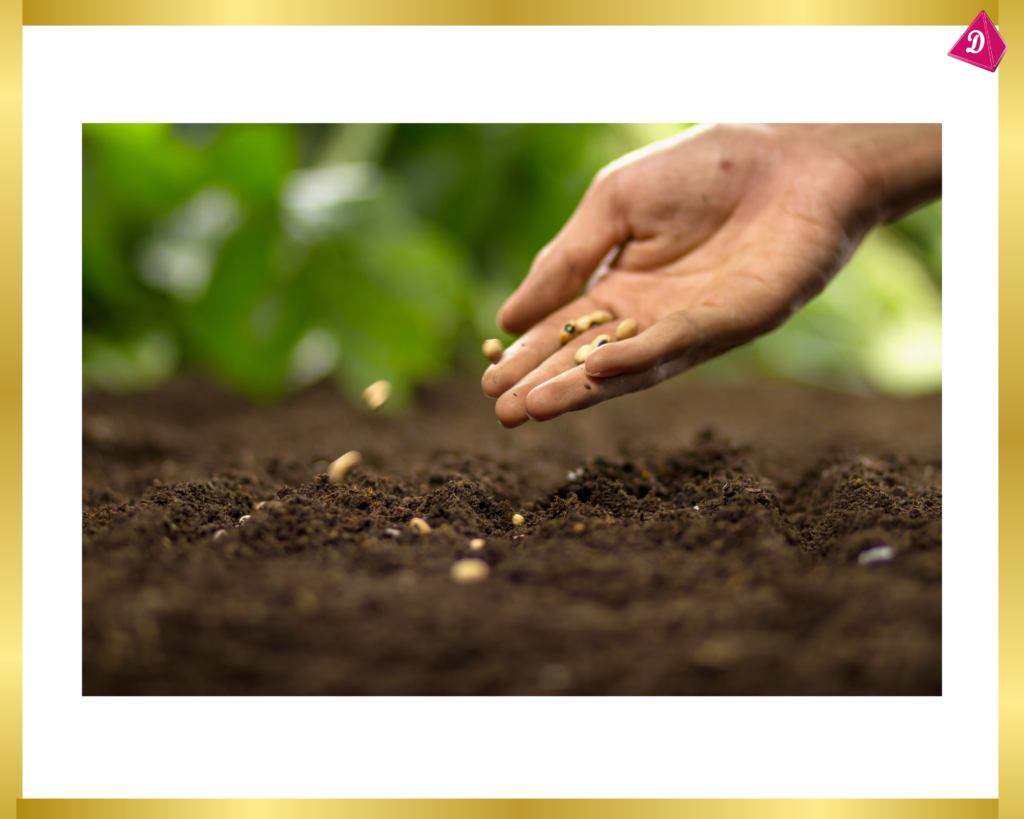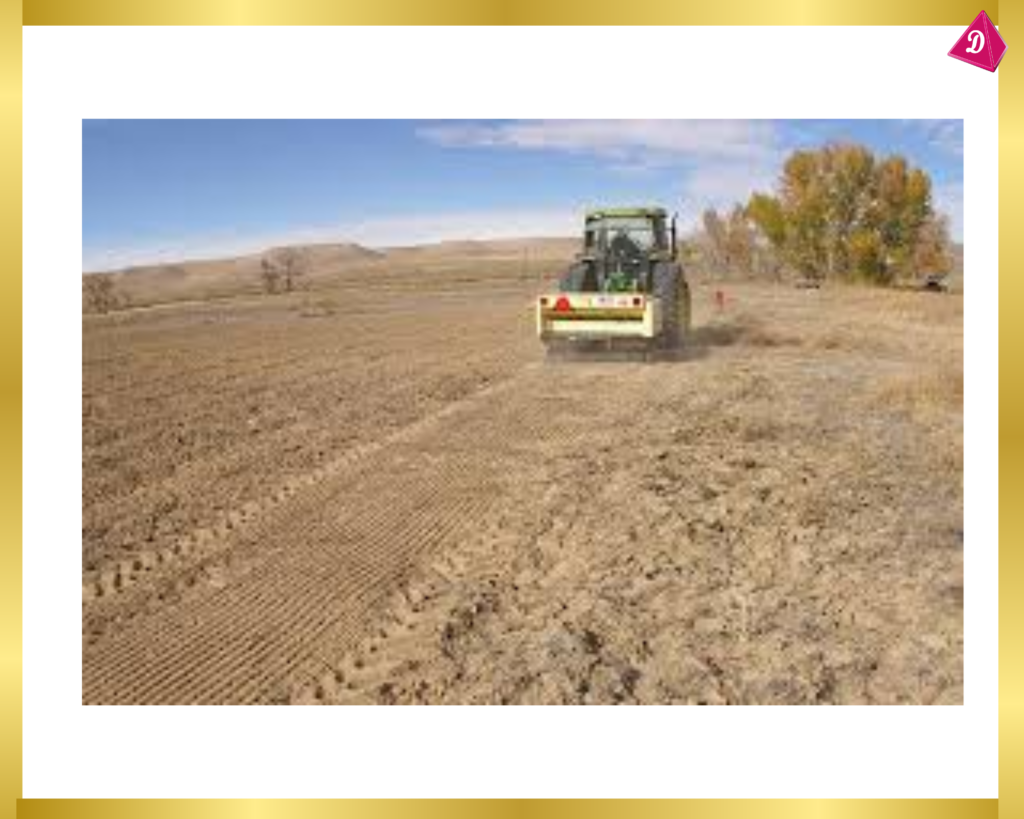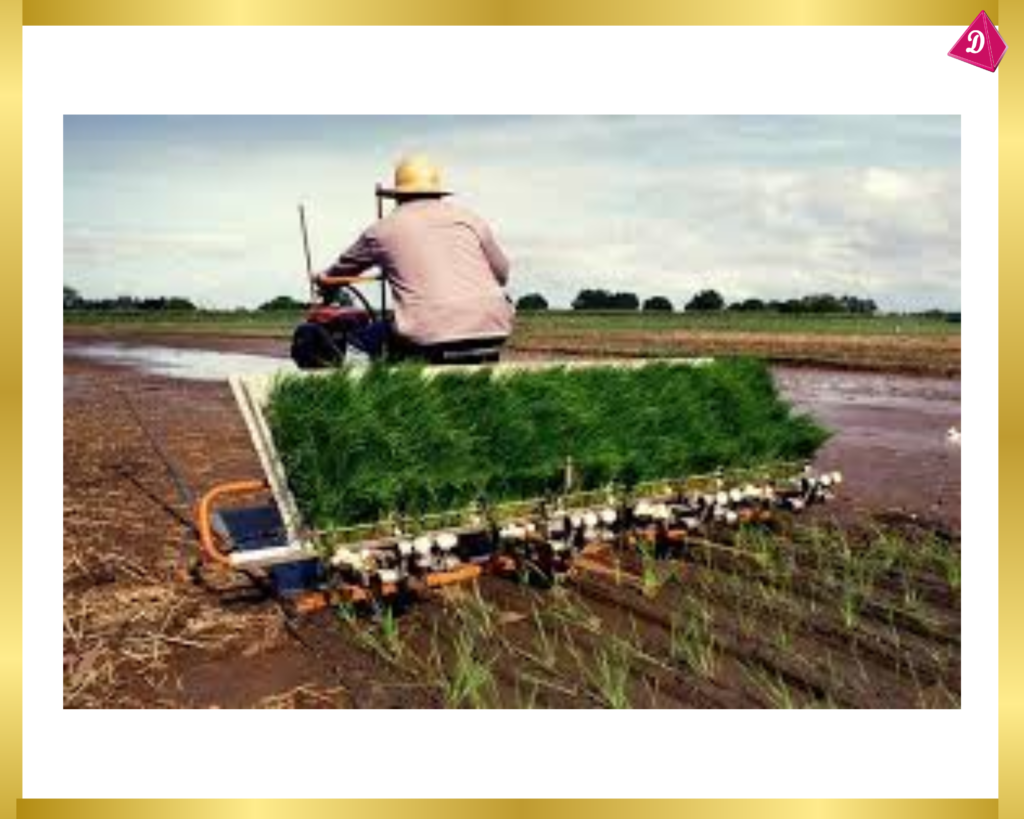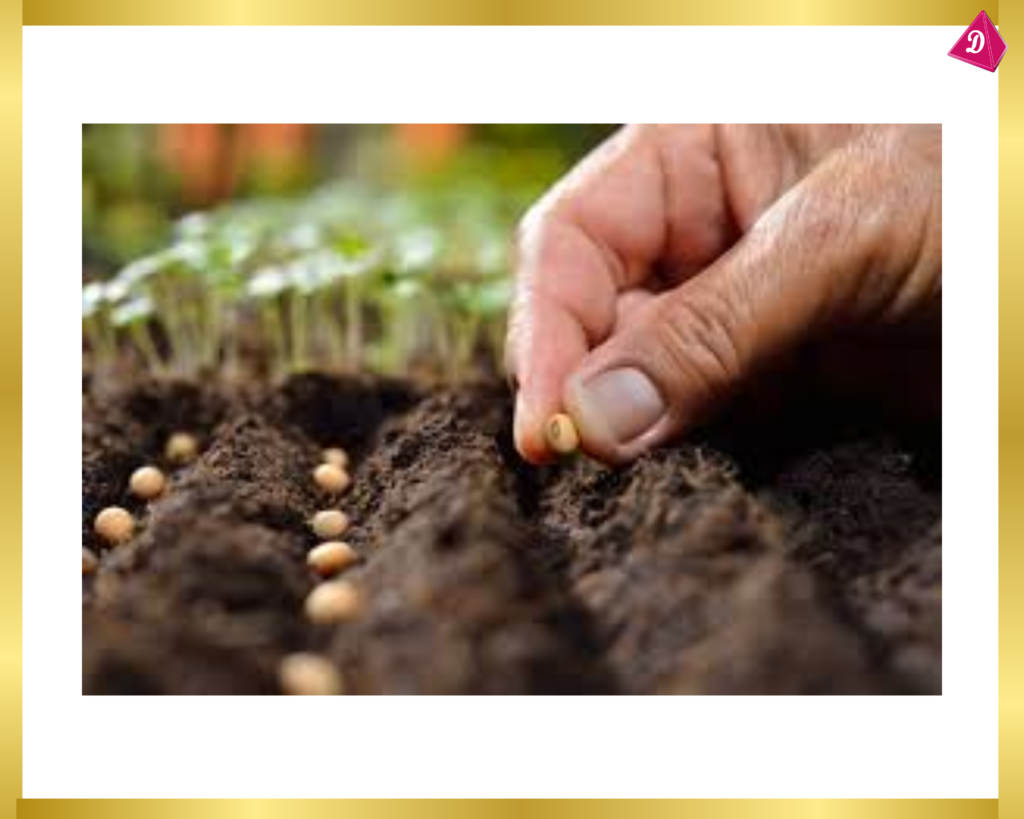Sowing
key notes :
Definition of Sowing:
- Sowing is the process of planting seeds in the soil to grow crops.

Importance of Sowing:
- Determines the success of crop growth and yield.
- Proper sowing ensures even distribution and optimal growth conditions for seeds.
Methods of Sowing:
- Broadcasting:
- Scattering seeds evenly over the soil surface.
- Suitable for crops like wheat and rice.
- Requires subsequent covering of seeds with soil.

- Drilling:
- Placing seeds in rows at specific depths and intervals using a seed drill.
- Ensures uniform growth and easier management of crops.

- Transplanting:
- Growing seedlings in a nursery and then planting them in the main field.
- Common for crops like paddy, tomatoes, and chilies.

- Dibbling:
- Placing seeds in holes made at regular intervals.
- Suitable for crops like cotton and vegetables.

- Hill Dropping:
- Placing seeds in small groups or hills at specific intervals.
- Common for crops like maize and beans.

Preparation for Sowing:
- Selection of Seeds:
- Choosing high-quality, disease-free seeds suitable for the local climate and soil conditions.

- Seed Treatment:
- Treating seeds with chemicals or biological agents to protect against diseases and pests.

- Moisture Content:
- Ensuring the soil has adequate moisture to support seed germination.

Depth and Spacing:
- Sowing seeds at the correct depth to ensure proper germination.
- Maintaining appropriate spacing between seeds to avoid overcrowding and competition for resources.

Time of Sowing:
- Sowing at the right time based on the crop type and climatic conditions.
- Ensures optimal growth and development of the crop.

Post-Sowing Care:
- Regular watering to maintain soil moisture.
- Monitoring for pests and diseases.
- Thinning out weak seedlings to ensure strong growth of remaining plants.

Tools and Equipment:
- Traditional tools: Hand hoe, seed drill.
- Modern equipment: Mechanical seed drill, precision planters.

Let’s practice!

